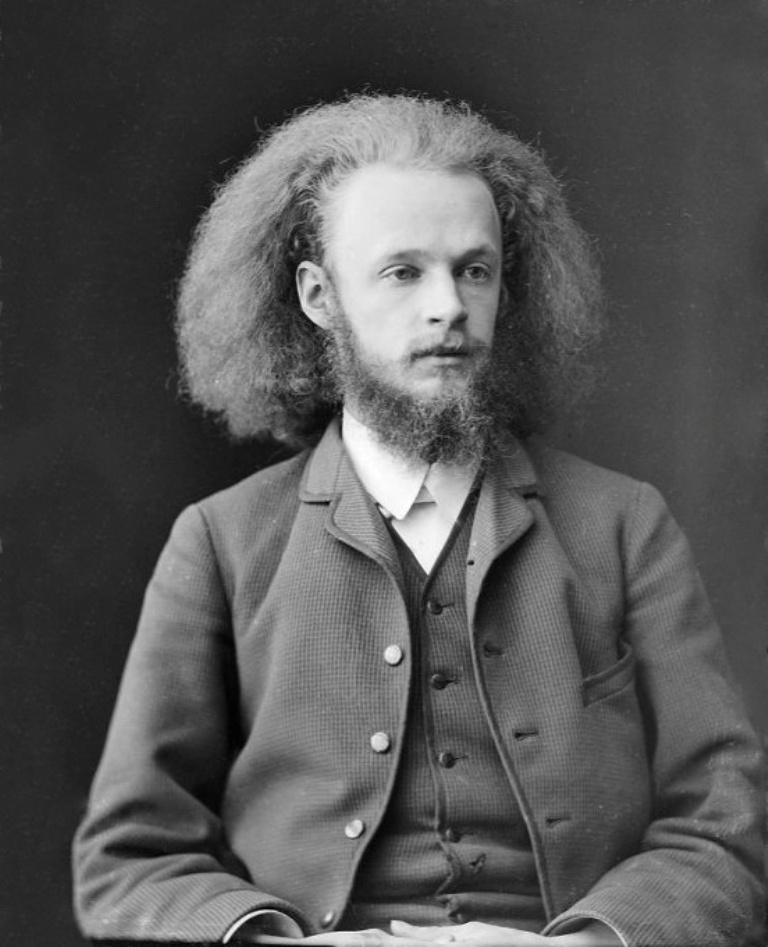Portrait of Tsarevich and Grand Duke Nicholas Alexandrovich (1889), the future Emperor Nicholas II, by the artist Baron Ernst Friedrich von Liphart (1847-1932), Russified as Ernst Karlovich Lipgart. Lipgart painted at least six portraits of Russia’s last monarch, including several ceremonial portraits.
This magnificent portrait is currently on display in the Twilight of the Gods II – Last Monarchs in the House of History of Bavaria exhibition, at the Museum of the House of Bavarian History in Regensburg, Bavaria until 16th January 2022.
The Emperor is depicted in the uniform of the Prussian 8th Hussar Regiment, of which he was appointed an Honourary Chief in 1889, his cape is decorated with the Royal Prussian Order of the Black Eagle.
The painting hung from 1890 to 1995 in the former dining room of Neuhaus Castle, directly opposite the portrait of Elector Clemens August of Bavaria. The officers of the 8th Hussar Regiment established a club for their meetings here and in the adjacent premises. The Prussian regiment was stationed at Neuhaus and Paderborn castle from 1851 to 1919. Following the end of World War I, the regiment was disbanded.
After the exhibition ends in January of next year, the portrait will be returned to the Residenz Museum in Neuhaus Castle.
PHOTO: Ernst Karlovich Lipgart (1847-1932). Self-portrait, 1881.
From the Collection of the State Russian Museum, St. Petersburg
Ernst Karlovich Lipgart (1847-1932) was a Russian portraitist and decorator. He was born in Tartu, and after living for a time in Florence, where he studied at the Academy of Arts, he moved to France and then to Russia.
He arrived in St. Petersburg in 1886, where he painted portraits of members of the Imperial family, including a whole gallery of portraits of Nicholas II. He also decorated palaces and theatres in the capital, including the curtain in the Hermitage Theatre.
Lipgart also took on more unusual requests, including the menu for the Tsar’s coronation in 1896 and then painting 100 figures on a piano, telling the story of Orpheus. The piano was a present from the Tsar to Empress Alexandra Feodorovna.
Between 1906-1929 he served as the Main Curator of the Hermitage Art Gallery. His role in the acquisition of the Madonna with a Flower by Leonardo da Vinci, which belonged to the Benois family, became a sensation in 1914.
In 1921 he was evicted from his house and his daughter was executed for harbouring a White Army officer.
© Paul Gilbert. 24 October 2021
***
COLOUR Hard cover edition of ‘Nicholas II. Portraits’ now available!

CLICK ON THE LINK BELOW TO ORDER FROM AMAZON
*HARD COVER EDITION @ $50 USD
PAPERBACK EDITION @ $40 USD
BOOK DESCRIPTION
Large format 8-1/2″ x 11″ hard cover and paperback editions, with 178 pages + 200 Colour and black & white photographs
SECOND EDITION, FEATURING 185 FULL COLOUR PHOTOS!
I am pleased to announce the publication of my latest book Nicholas II. Portraits, in both hard cover and paperback editions. This is my first hard cover book and my first book featuring full colour photographs.
Originally published in 2019, with 140 pages with 175 black and white photos, this new expanded edition features more pages and more photographs: 180 pages + more than 200 photos, including 185 FULL COLOUR and 30 black & white!
Nicholas II. Portraits explores a century of portraits of Russia’s last emperor and tsar, through the eyes of pre-revolutionary and contemporary Russian, and foreign artists.
This unique title – the first book of its kind ever published on the subject – features an introduction, as well as a series of short articles, and richly illustrated, including many full-page, with detailed and informative captions.
The cover features a portrait of Tsesarevich and Grand Duke Nicholas Alexandrovich (1889), the future Emperor Nicholas II, by the artist Baron Ernst Friedrich von *Lipgart (1847-1932).
* Lipgart painted a whole gallery of portraits of Nicholas II, my book features 10 of them – all in COLOUR!
The Emperor is depicted in the uniform of the Prussian 8th Hussar Regiment, of which he was appointed an Honourary Chief in 1889, his cape is decorated with the Royal Prussian Order of the Black Eagle.
The painting hung from 1890 to 1995 in the former dining room of Neuhaus Castle, directly opposite the portrait of Elector Clemens August of Bavaria. The officers of the 8th Hussar Regiment established a club for their meetings here and in the adjacent premises. The Prussian regiment was stationed at Neuhaus and Paderborn castle from 1851 to 1919. Following the end of World War I, the regiment was disbanded.
From the Collection of the Museum of the House of Bavarian History in Regensburg, Bavaria.
The articles include: Serov’s Unfinished 1900 Portrait of Nicholas II; A Nun’s Gift to Russia’s New Tsar. The Fate of a Portrait; Galkin’s Ceremonial Portrait of Nicholas II Discovered; among others!
Famous portraits and their respective artists are all represented, including Serov, Repin, Lipgart, Tuxen, Bakmanson, Becker, Bogdanov-Belsky, Kustodiev, and many others.
The last section of the book is dedicated to the works of contemporary Russian artists, who have painted outstanding portraits of Nicholas II since the fall of the Soviet Union in 1991.
AVAILABLE EXCLUSIVELY FROM AMAZON WORLDWIDE!
© Paul Gilbert. 10 December 2021













































You must be logged in to post a comment.